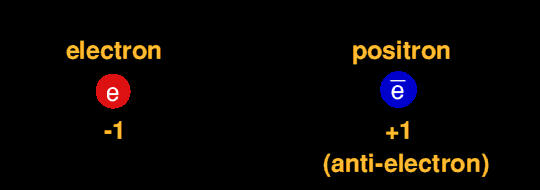

Any charged particle, when traversing a magnetic field, will be accelerated by that field and be forced into taking a circular path. As a consequence of this acceleration, the charged particle will radiate energy in the form of photons, broadband polarised synchrotron radiation. Electrons and positrons, being particularly light, are easily accelerated by such fields and will radiate strongest. Strong magnetic fields will produce energetic X-rays, even stronger fields gamma rays. This is why electron accelerators are either linear (where synchrotron radiation is least but not absent, the electrons in a linear accelerator are being accelerated) or have very large diameter beam circles, the larger the better so far as losing energy in the form of synchrotron radiation is concerned. On the other hand, some electron accelerators are used for creating intense synchrotron radiation; here they use strong wiggler magnets to waggle the electron beam from side to side in as tight a bends as are possible.
Any flow of electrons will generate a magnetic field. Similarly, a moving magnetic field will create an electrical current within an electrical conductor. But electrons can also sense the proximity of a magnetic field even when that field is completely shielded from them. This is the Aharonov-Bohm effect. Two beams of electrons, travelling both sides of a shielded magnetic field, will creat a different interference pattern when the magnetic field is not present than when it is present.
Electrons (and positrons) are fermions with a half-integral spin of ½, which means that in some sense they must rotate twice in order to return to their starting orientation, analogous to a Mobius loop. (It must be remembered that theorists surmise that space may exist in up to 11 dimensions). The charge on the electron (-1) is exactly equal but opposite to the charge on the proton (+1), which is surprising since they are totally different entities. The relationship between an electron (a lepton which experiences the electroweak force) and a proton (a hadron which experiences the strong nuclear force) has yet to be determined. But see Twisted Tri-Prism theory.
|
11 Dimensional Universe
M-theory, the most plausible theory that tries to unite gravity, electroweak and strong forces, is one kind of string theory. The strings in string theory are but 10-33 metres long, and the way in which they vibrate governs their appearance; quarks, electrons, neutrinos, photons, etc. The strings vibrate in 11 dimensions, most of which are curled up into rolls just 10-35 metres across. But the multiplicity of dimensions and vibrational modes creates an embarrassing richness of particles; it is estimated that there are 10500 solutions to the equations (which is many orders of magnitude greater than the number of particles in the Observable Universe ~1080). Each of these solutions could represent an entirely different Universe to the one we can see. No one knows if this represents the true state of affairs, or can even solve one equation, let alone that many.
|
Electrons are not only electrically charged, but they also carry a small weak-force charge that, un-like electrical forces which extend to infinite distance, is extremely short-range because it is mediated by a virtual, very heavy, W-boson, where the energy for its virtual appearance must be borrowed. The weak force is responsible for radioactive beta decay where a neutron can change into a proton and anti-neutrino. The degree to which particles feel the weak force depends upon the direction of their spin. When billions of electrons are fired into a target of liquid hydrogen, a few incident electrons are deflected by orbital electrons in the hydrogen, and are more likely to be deflected if the incident electrons are spinning clockwise along their direction of motion than if they are spinning anti-clockwise. The difference between the two is very small, only 150 parts per billion, or 1 in 1.5×107, implying that the weak charge on the electron is just -0.05 (approx -1/17th) of that on the W-boson.
Electric charge is conserved, it cannot be created or destroyed. It has been proved that if space exists in five dimensions (only), including one of time, then charge can be destroyed, but certainly not if there are only four dimensions (including time).
As an electron flies through the vacuum, it does with a random jittery motion at a rate of about 1027 per second; this jittery motion is known as Zitterbewegung, in German. This motion has never been observed directly. In the vacuum, all sorts of sub-atomic particles continually pop into and out of existence, so called virtual particles. This is a consequence of the non-zero zero-point energy of the vacuum, that permeates all space. It has been suggested that the reason for the electrons Zitterbewegung is because of the buffeting it receives from the seething mass of virtual particles rather than of an intrinsic property of the electron itself.It is also suggested that in the Zwitterbewegung process, the mass transferred to the electron is exactly E=mc2, where m is the mass of the electron. In other words, the electron has zero intrinsic mass, and gathers all its' mass from the seething vacuum. [See Higgs Particle for another explanation for the mass of every particle].
In 2014 the atomic mass of an electron relative to that of a proton has been measured to a greater precision than ever before: it measures 0.000548579909067 that of a proton. The rest mass of the electron is 0.510998910(13) MeV.
![]()
![]()